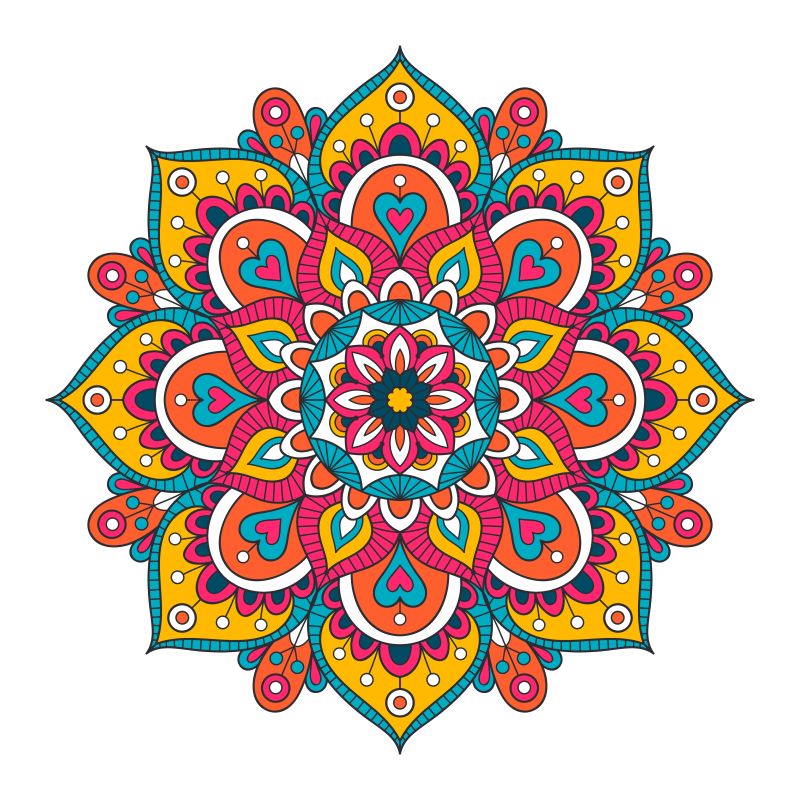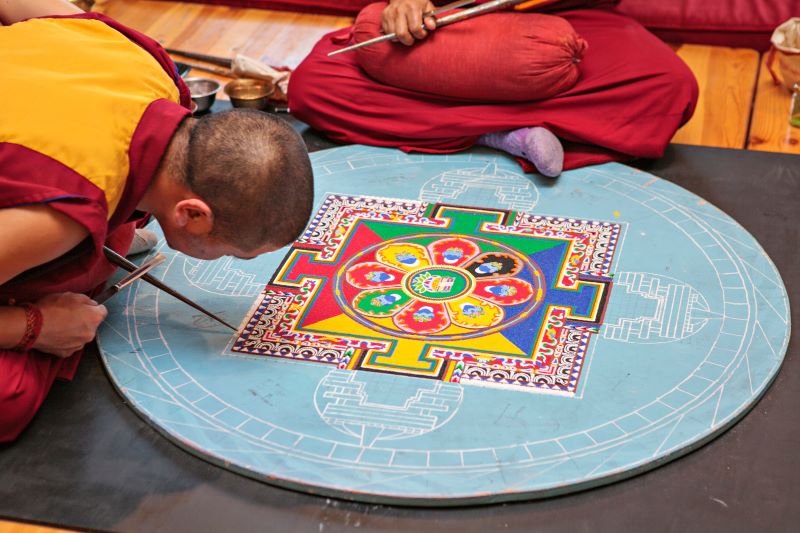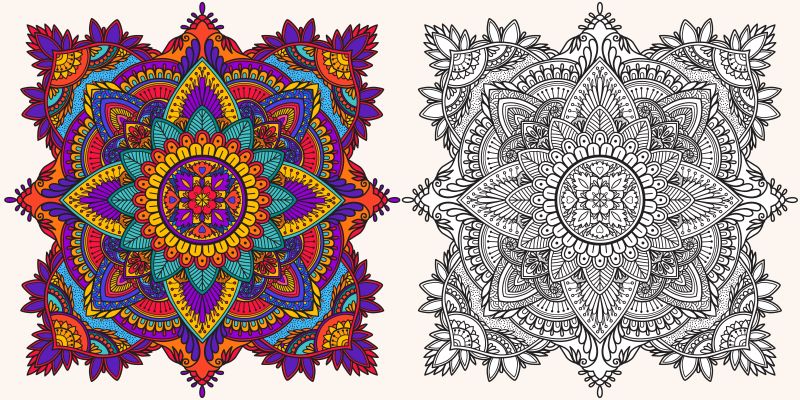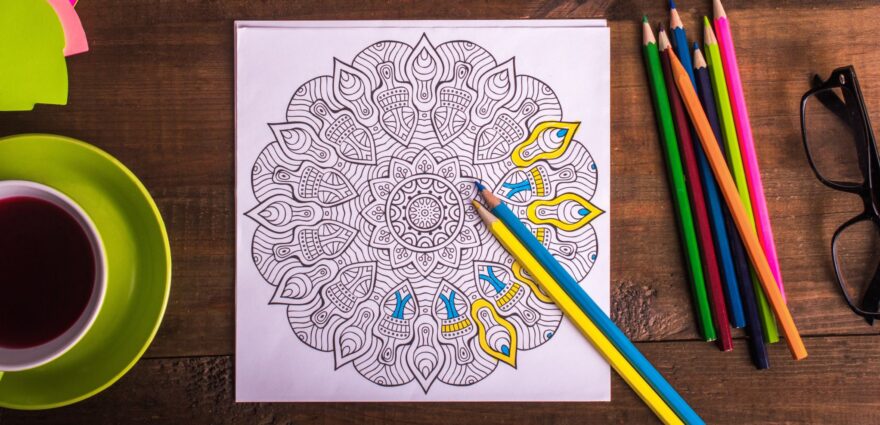Do you seek a more visually, artistically-challenging form of mediation? If so, mandala coloring is an overlooked option. The word mandala evolves from Sanskrit, meaning circle. It is a geometric design with circles often contained within squares. Coloring them puts aside other thoughts while channeling focus.
Mandalas are rich in symbolism for the Hindi and Buddhist cultures. More than just a circle, the mandala represents wholeness and unity. It takes concentration and practice, and one must stay focused to create a color scheme. Consequently, mandala coloring fosters relaxation and mindfulness, and stimulates feel-good hormones.

Mandala Coloring for Well-Being Tuesdays
Each Tuesday in May, for Mental Health Awareness Month, the LMS Human Resources Team sets aside two 20-minute sessions for the entire team via Zoom meetings. In the first week, we featured desk yoga for mental and physical awareness. Many of us work remotely, so it’s also a chance to interact with our teammates, which is fun and a healthy break for the mind and body.
Today, mandala coloring is the theme of our meetings. There are countless free printable Mandala coloring pages available, as well as books. They work for kids too. All you need are colored pencils, markers, or crayons, and an open mind.
Healing, Teaching, and Sand Mandala
There are many types of mandalas. Healing mandalas are to elicit feelings of calm while channeling focus and concentration. Teaching mandalas are for each line, shape, and color to represent a different aspect of philosophy or religion.
The most recognized are Sand mandalas, traditionally made in the Tibetan Buddhist tradition with exquisite designs of colored sand. These are created by monks who have devoted their lives to the ritual. The Tibetan sand mandala goes further by demonstrating how brief life is. These stunning works of art end with their destruction with no trace of existence.


“Coloring mandalas allows the brain to enter a peaceful state and to be focused on filling in the geometrical shapes instead of thinking about their worries.” – Carl Jung
Additional benefits of mandala coloring include reduced anxiety and negative thoughts and improved sleep due to stimulating the release of melatonin. Historically, coloring mandalas is a form of art therapy intended to relieve stress and exercise the brain’s creativity.
Nature is full of circles, including wind patterns, flowers, the earth, its orbit, the season cycle, and life itself. The shapes and colors of mandalas are traditionally symbolic of these elements to elicit a feeling of wholeness.
There is no right or wrong way to create or color a mandala. It is whatever the artist chooses it to be. If it results in an enjoyable way to improve mental wellness while exploring creativity, it shows the value of the ancient art form to help, heal, and teach.
The late Harvard Doctor Herbert Benson said coloring mandalas “causes a relaxation response due to repetitive movement that requires us to put aside thoughts that arise and return to the point of focus or repetition.”
He noted the following benefits:
- Lower heart rate and blood pressure
- Reduced pulse rate
- Decreased oxygen consumption
- Lower cortisol production (stress hormone)
- Increase in the release of feel-good hormones
